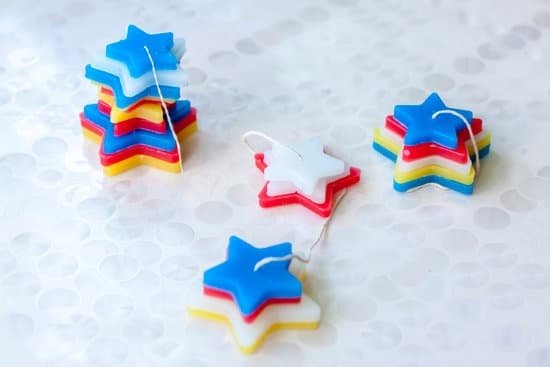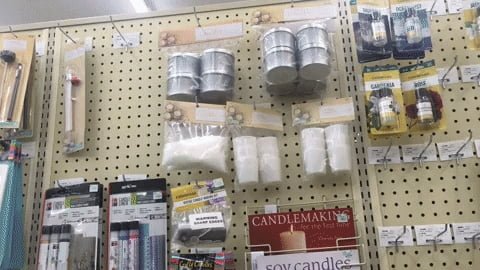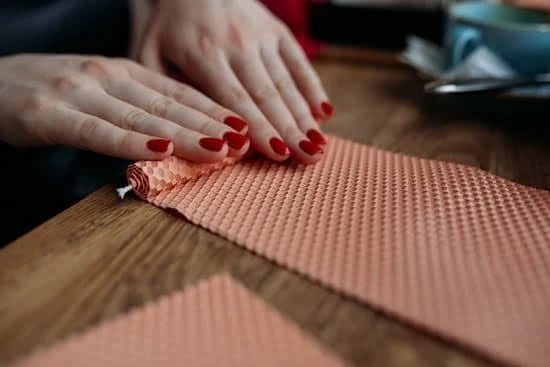When it comes to making candles, selecting the right type of wick is a crucial step that should not be overlooked. The type of wick you choose can greatly impact the burn time and overall performance of your candle. Whether you are a beginner or an experienced candle maker, understanding the importance of choosing the proper wick is essential for creating successful candles.
Selecting the right wick for your candle involves considering several factors. The size and diameter of the wick play a significant role in determining how well your candle burns. Different types of wicks, such as braided cotton, wood, and hemp, each have their own unique characteristics and advantages. Additionally, the type of wax you use and whether your candles are scented or unscented can also influence the choice of wick.
The type of wick you choose can make a significant difference in how your candle operates. A properly selected wick ensures an even melt pool and prevents issues like tunneling or excessive smoke. In contrast, an ill-suited wick can lead to poor burn quality or incomplete wax consumption. Understanding these aspects will help you make informed decisions about which type of wick to use for different types of candles, whether they are container candles, pillar candles, or tapers.
In this article, we will delve into the fascinating world of candle making wicks. We will explore various types of wicks available in the market and discuss their pros and cons. Additionally, we will cover important factors to consider when choosing a suitable wick for your specific needs.
By the end of this article, you will have a comprehensive understanding of how different types of wicks contribute to successful and aesthetically pleasing candles. So grab your supplies and let’s dive into the world of wicks.
Understanding Different Types of Wicks
When it comes to candle making, selecting the right wick is crucial for a successful and high-performing candle. Understanding the different types of wicks available in the market is essential in achieving the desired burn time and performance.
There are various types of wicks that candle makers can choose from, each with its own set of characteristics and qualities. The most common type of wick material is cotton, known for its reliable and consistent burning properties. Cotton wicks come in different variations such as braided, square braided, and flat braided, providing options for different candle types.
Another option to consider is wood wicks, which add a rustic element to candles. Wood wicks not only provide a unique aesthetic appeal with their crackling sound when burning but also offer excellent performance in certain types of candles. It’s important to note that proper care and maintenance are required for wood wicks to ensure optimal burning.
For those looking for an eco-friendly option, hemp wicks are worth considering. Hemp wicks contribute to sustainable candle making as they are made from natural fibers and do not release harmful chemicals when burned. These wicks work well in various candle types and can provide a clean burn.
In addition to these traditional materials, there are also alternative wick materials available, such as paper or zinc. These unconventional materials may be suitable for specific candle types or techniques, offering unique design possibilities or effects.
When choosing the right wick, factors like diameter and size considerations should be taken into account. The type of wax used also plays a role in determining the compatibility with different wick materials. Scented versus unscented candles may require different types of wicks due to variations in their burn characteristics.
To ensure the best results, it is recommended to conduct wick tests before finalizing your candle production. Performing a burn test allows you to observe the wick’s performance and make necessary adjustments. It’s also important to troubleshoot common issues that may arise with wicks, such as tunneling or excessive smoking, and find appropriate solutions.
Overall, understanding the different types of wicks available and considering their characteristics is vital in selecting the perfect wick for your candle-making journey. Experimentation and finding the ideal wick for each candle project will not only result in aesthetically pleasing candles but also ensure their functionality and desired burn time.
Factors to Consider When Choosing a Wick
When it comes to choosing the right wick for your candle, there are several important factors to consider. Selecting the correct wick is crucial for achieving a successful burn and overall performance of your candle. Here are some key factors to keep in mind when choosing a wick.
Diameter and Size Considerations
One of the first things to consider when selecting a wick is its diameter or size. The diameter of the wick will determine how much fuel (wax) it can absorb and burn. A rule of thumb is that larger candles require thicker wicks, while smaller candles need thinner ones. Choosing the right diameter ensures that the flame stays steady and not too small or too large.
In addition to diameter, you should also consider the length of the wick. The length should be appropriate for the depth of the container or height of the candle. Too short of a wick may cause tunneling (when only a small ring of wax melts around the outer edges), while too long of a wick may result in excessive flickering or smoking.
Wax Type and Compatibility
Another important factor to consider when choosing a wick is the type of wax you will be using for your candle. Different types of wax have varying characteristics, such as melt point and viscosity, which can affect how well a particular type of wick performs.
For example, soy wax tends to require larger or hotter burning wicks compared to paraffin wax due to its lower melting point. Beeswax, on the other hand, tends to work best with cotton cored wicks because it has a high viscosity that requires more heat to properly melt and burn.
It’s essential to check with the manufacturer’s recommendations or conduct some testing when pairing different types of wax with specific types of wicks to ensure optimal performance.
Scented versus Unscented Candles
If you plan on adding fragrance to your candles, it’s important to consider the impact it may have on the choice of wick. Scented candles typically require a larger or hotter burning wick because the addition of fragrance oils can make the wax burn less efficiently.
The added chemicals in scented candles can cause increased soot and smoke, resulting in poor burn quality and potential safety hazards. Therefore, when making scented candles, it’s crucial to choose a wick that is specifically designed for this purpose to ensure proper burning and avoid any potential issues.
Additionally, if you are making unscented candles, you may have more flexibility in selecting a wick as there are no added fragrances to affect its performance.
Wick Recommendations for Colored or Specialty Candles
Colored or specialty candles, such as those with unique shapes or textures, may require special considerations when choosing a wick. The presence of certain additives or dyes in colored candles can affect how the wick burns.
For example, metallic additives used to achieve shimmering effects can interfere with the performance of some types of cotton wicks. In these cases, it may be necessary to explore alternative wick materials that are more compatible with colored or specialty candles.
Before finalizing your choice of wick for these types of candles, it’s important to conduct testing to ensure that the wick performs well and produces the desired results.
By taking into account these factors when choosing a wick for your candle-making project, you will be on your way to creating beautiful and functional candles that burn evenly and effectively.
Cotton Wicks
Cotton wicks have long been a popular choice for candle making due to their reliability and versatility. These wicks are made from 100% cotton fibers tightly woven together, creating a strong and efficient burning wick. Here, we will explore the advantages of using cotton wicks, their different variations, and the types of candles that work best with them.
One of the main advantages of cotton wicks is their clean and consistent burn. The tightly woven fibers allow for a steady flame without excessive smoking or soot formation. This makes cotton wicks an excellent choice for both scented and unscented candles, as they do not interfere with the aroma or affect the overall appearance of the candle. Additionally, cotton wicks have good burn characteristics, providing an even melt pool and maximizing burn time.
Cotton wicks come in various variations to cater to different candle types and sizes. Braided cotton wicks are the most common type, offering stability and strength during burning. They are suitable for container candles as well as pillar candles.
Square braided cotton wicks provide even more stability, making them ideal for larger pillar candles or specialty-shaped candles where rigidity is required. Flat braided cotton wicks are thinner in size but offer excellent curling resistance, making them ideal for taper candles.
When choosing a cotton wick for your candle project, it is important to consider the diameter or size of the wick. A smaller diameter is suitable for narrower containers or tapers, while larger diameters are better suited for wider containers or pillars. It is also important to consider the type of wax you will be using, as certain wax blends may require a different size or type of cotton wick.
Overall, cotton wicks remain a classic choice for candle makers due to their reliability and versatility. Whether you’re making container candles or intricately shaped taper candles, there is likely a variation of cotton wick that will suit your needs. By selecting the right cotton wick for your candle project, you can ensure a consistent burn and achieve the desired aesthetic and functionality of your candles.
Wood Wicks
Wood wicks are a unique and popular choice for candle makers who want to add a touch of rustic charm to their creations. These wicks are made from natural wood materials, such as cherry, birch, or maple, and they provide several distinct characteristics that set them apart from traditional cotton wicks.
One of the most notable features of wood wicks is the crackling sound they produce when burning. This auditory effect creates a cozy ambiance reminiscent of a crackling fireplace, adding to the overall sensory experience of the candle. Additionally, wood wicks tend to burn longer and produce a wider flame compared to cotton wicks, resulting in better scent throw and an enhanced aesthetic appeal.
When it comes to choosing the right candle type for wood wicks, container candles are an ideal option. The larger flame produced by wood wicks requires more space for proper oxygen flow and heat dissipation. Container candles provide this necessary ventilation while showcasing the beauty of the wooden wick flickering inside the vessel.
To ensure optimal performance and longevity of wood wicks, proper maintenance and care are essential. Before lighting a candle with a wood wick for the first time, it is recommended to trim the burnt portion of the wick to approximately 1/8 – 1/4 inch. This will help create an even burn pool and prevent mushrooming or excessive smoke during subsequent uses.
It is also important to keep in mind that carbon buildup may occur over time with wood wicks due to their natural composition. Simply scrape off any excess carbon with a pair of tweezers before each use to maintain an efficient burn.
| Characteristic | Advantages | Disadvantages |
|---|---|---|
| Crackling sound | Creates cozy ambiance | Potential distraction for some users |
| Longer burn time and wider flame | Better scent throw and aesthetic appeal | Requires proper ventilation in candle type selection |
| Require maintenance and care | Trimming minimizes mushrooming and smoke | Possible carbon buildup over time |
Hemp Wicks
Hemp wicks have gained popularity in the candle-making community for their eco-friendly and sustainable characteristics. Made from the fibers of the hemp plant, these wicks offer a renewable alternative to traditional cotton or synthetic wicks. In this section, we will explore the benefits of using hemp wicks, their suitability for different candle types, and provide tips for achieving a great burn.
One of the key advantages of hemp wicks is their eco-friendliness. Hemp is a sustainable crop that requires minimal water, pesticides, and fertilizers to grow. It also has a shorter harvesting cycle compared to other fibers used in wick production. By choosing hemp wicks, candle makers can help reduce their environmental impact and support more sustainable practices.
In addition to being eco-friendly, hemp wicks offer several practical benefits. They have a slower burn rate than cotton wicks, which helps extend the overall burn time of the candle. This slower burn rate allows for a more even distribution of heat and wax throughout the candle’s lifespan. Hemp wicks also produce less soot and smoke compared to other materials, resulting in cleaner air quality when burning candles.
When selecting a hemp wick for your candles, it is important to consider the type of candle you are making. Hemp wicks are particularly suitable for container candles due to their stability and ability to efficiently draw up liquid wax. They may not be ideal for larger pillar or taper candles as they may struggle to maintain an adequate flame size.
To ensure a great burn with hemp wicks, it is recommended to trim the wick before each use and keep it at an appropriate length based on your container size. This will help prevent excessive flickering or uneven burning. Additionally, make sure that your wax mixture is compatible with hemp wicks by conducting small test batches before producing large quantities of candles.
| Advantages of Hemp Wicks | Considerations for Hemp Wicks |
|---|---|
| – Eco-friendly and sustainable | – May not be suitable for larger pillar or taper candles |
| – Slower burn rate, longer overall burn time | – Require proper trimming to prevent uneven burning |
| – Produce less soot and smoke | – Test compatibility with wax mixture before large-scale production |
As the demand for environmentally friendly products continues to grow, hemp wicks offer candle makers an opportunity to create candles that align with sustainability values. By choosing hemp wicks, you not only contribute to reducing your carbon footprint but also provide customers with a unique and eco-conscious candle experience.
Other Alternative Wick Materials for Unique Candles
Paper Wicks: A Versatile and Budget-friendly Option
Paper wicks offer an alternative option for candle makers looking to achieve unique designs and effects. These wicks are typically made from a thin strip of paper, which makes them easy to work with and cost-effective. One advantage of using paper wicks is that they can be easily customized to fit different candle sizes and shapes.
However, it’s important to note that paper wicks may not provide the same burn performance as traditional cotton or wood wicks. They tend to have a shorter burn time and may require more frequent trimming. Additionally, paper wicks may produce a smaller flame compared to other types of wicks, which can affect the scent throw of scented candles.
Despite these limitations, paper wicks are particularly suitable for container candles or smaller decorative candles where burn time is not a primary concern. They can also be used in combination with other materials, such as cotton or wood, to create interesting layered or textured effects in pillar or taper candles.
Zinc Wicks: Enhancing Stability and Longevity
Zinc wicks are another alternative material that can be used in candle making. These wicks are typically constructed with a zinc core surrounded by cotton or other fibers. The zinc core provides extra rigidity and stability to the wick, making it an excellent choice for larger candles.
One of the main advantages of using zinc wicks is their resistance to “mushrooming” – a common issue where carbon deposits accumulate at the tip of the burning wick. This buildup can cause flickering flames, excessive soot production, and poor burn performance. Zinc-cored wicks minimize mushrooming and ensure a cleaner burn.
Zinc-wicked candles are commonly used for outdoor candles or jarred candles that require a stronger and more robust flame. However, it’s worth noting that zinc-cored wicks may have a slower burn rate compared to other types of wicks, so they may not be suitable for small or narrow containers.
Unconventional Materials for Creative Candle Designs
For candle makers who want to push the boundaries of creativity, there are plenty of unconventional materials that can be used as wicks. These materials include twisted wire, hemp rope, and even strands of colored fabric.
Using unconventional wick materials allows for endless possibilities in terms of design and aesthetic. Twisted wire wicks, for example, can create unique spiral patterns within the candle wax. Hemp rope wicks offer a rustic and natural look to candles. Colored fabric strips can add a pop of color and texture to pillar or taper candles.
However, it’s important to exercise caution when experimenting with these alternative materials. Some may not burn well or produce unwanted smoke or odors when lit. It’s essential to thoroughly test these wicks before using them in finished products and ensure they comply with safety standards.
Testing and Troubleshooting Wick Performance
When it comes to candle making, selecting the perfect wick is crucial for achieving a successful burn. However, not all wicks are created equal, and finding the right one for your specific candle can be a bit of a trial-and-error process. This is where testing and troubleshooting wick performance becomes essential.
Before finalizing your candle production, it’s important to conduct thorough tests on different wicks to determine which one will give you the desired burn and performance. One effective method is performing a wick burn test. To do this, make a sample candle with each type of wick you want to test.
Pay close attention to factors such as flame size, flickering, smoke production, and how well each wick burns through the wax pool. By carefully observing these characteristics, you can identify any issues or inconsistencies that may arise with certain wicks.
During the testing phase, it’s common to encounter issues with wick performance. Some common problems include tunneling (when the candle doesn’t burn all the way to the edges), excessive smoking, or low or high flame height. Fortunately, there are solutions available for troubleshooting these issues.
To address tunneling, try using a larger diameter wick or ensuring that your container size matches the recommended size for your chosen wick. For excessive smoking, reduce scent load or consider using an alternative fragrance oil that has been tested with your specific wicks. If your flame height is too low or too high, adjust your wax blend or try utilizing a different type of wick altogether.
It’s important to note that troubleshooting can be an ongoing process even after you’ve finalized your candle production. Factors such as changes in ambient temperature and humidity can affect how a particular wick performs in your candles over time. Regularly monitoring and documenting any changes in behavior will help you maintain consistent quality in your finished products.
Remember, choosing the perfect wick for your candle-making journey is a combination of scientific testing and personal preference. Don’t be afraid to experiment with different wick materials, sizes, and styles to find the ideal fit for each candle project. By considering the overall aesthetic and functionality of the candle, you can create beautiful and high-performing candles that will delight your customers or loved ones.
Conclusion
In conclusion, choosing the perfect wick for your candle-making journey is crucial for the overall success of your candles. The type of wick you select will greatly impact the burn time and performance of your candles, so it is important to understand the different options available in the market.
Throughout this article, we have discussed various types of wicks including cotton, wood, hemp, and alternative materials. Each type has its own advantages and disadvantages, and it is essential to consider factors such as diameter and size, wax compatibility, and whether or not your candle is scented or colored when choosing a wick.
When making your selection, it is also important to consider the overall aesthetic and functionality of your candle. Depending on the type of candle project you are working on – whether it be container candles, pillars, tapers or specialty candles – certain wicks will work best in achieving the desired effect.
Ultimately, finding the right wick may require some experimentation and testing. Conducting burn tests before finalizing your candle production can help ensure that you have chosen the perfect wick for each specific candle project. With patience and practice, you will soon discover the ideal combination of wax, fragrance, and wick that produces beautiful candles with a clean burn and excellent performance.
Remember to always follow proper maintenance and care instructions for your chosen wick material to prolong its lifespan and ensure consistent results. By considering all these factors in selecting your wick, you can embark on a successful candle-making journey that results in beautifully crafted candles that both delight the senses and enhance any space.
Frequently Asked Questions
What should I use for a candle wick?
When choosing a candle wick, it is important to consider the type of wax you will be using and the size of your candle. Cotton wicks are widely used and recommended for most types of candles because they burn cleanly and are readily available.
They are versatile and work well with various wax types. However, if you plan to make specialty or container candles, you might want to explore other options such as wooden or hemp wicks that offer unique burning characteristics or aesthetic appeal.
Is a thin or thick candle wick better?
The thickness of a candle wick depends on the diameter of the candle and the desired burn rate. A thin wick is typically used for smaller candles as it burns at a slower rate, allowing the wax to melt evenly without causing excessive heat.
Thicker wicks, on the other hand, are generally suitable for larger candles where more heat is required to achieve even melting across a wider surface area. It is crucial to match the wick thickness with your candle’s size to prevent overheating or inefficient burning.
What is the best wick for molded candles?
The best wick for molded candles varies depending on the specific characteristics you desire for your finished product. For tapered molded candles that require a long-reaching flame, coreless cotton or square braided cotton wicks can be suitable since they provide stability as the candle burns down.
If you prefer soy wax in your molded candles, flat braided cotton wicks are often recommended due to their excellent performance with this type of wax. Testing different wicks with small samples can help determine which one works best for your specific mold design and wax choice while achieving optimal burn quality and safety.

Welcome to my candle making blog! In this blog, I will be sharing my tips and tricks for making candles. I will also be sharing some of my favorite recipes.





